Environment
425 articles

Cirrus clouds are a type of wispy cloud that forms in the upper layers of the atmosphere, generally above 6,000 meters. They are composed mainly of ice crystals. There are numerous types of cirrus clouds with specific classification according to their characteristics such as formation and meteorological...

Organic fertilizers are a choice that both many home gardeners and industrial agricultural business are making. The reasons behind this movement toward organic vs. inorganic fertilizers has a lot to do with sustainability. Synthetic fertilizers are often cheaper and very effective when used in farming. However,...

Altocumulus clouds are a type of cloud found in the middle part of the Earth's atmosphere, typically between 2,000 and 7,000 meters above sea level. They are characterized by their patchy appearance, causing a formation of multiple white or gray clouds across the sky. There are different types of altocumulus...
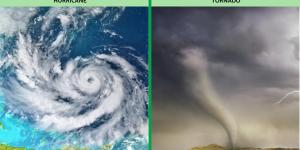
Both tornadoes and hurricanes are extreme weather events defined by their destructive ability and association with thunderstorms. One of the key differences between tornadoes and other thunderstorms are their size, duration and level of destructiveness. Distinctions are also made between their formation...

Did you know that by 2050, nearly half of the world's population could be living in areas experiencing water stress? Water stress occurs when the demand for freshwater outpaces the available supply in a particular region. This imbalance can be caused by limited freshwater resources, increasing demand,...
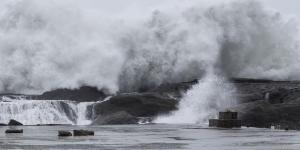
Have you ever been enjoying a calm day at the beach when suddenly the water rapidly recedes, only to come crashing back in a powerful wave? This unexpected surge might not be a traditional tsunami, but a meteotsunami, a giant wave caused by powerful weather events. Unlike its earthquake-triggered counterpart,...

For millennia, humanity has cast its nets into the ocean's bounty. Early fishing practices were small-scale and focused on meeting immediate needs. However, with population growth and technological advancements, the impact on fish stocks became increasingly evident. In this sense, the Industrial Revolution...
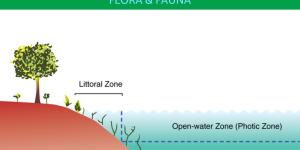
Bodies of water such as oceans and lakes have different characteristics depending on the part in question. When the body of water is sufficiently large, it can be divided into various parts known as zones. These zones have varying characteristics, influenced by various factors. One of the most important is...

The threat of desertification to ecosystems, livelihoods, and food security is one of the most pressing environmental challenges of our time. During this process, fertile lands are transformed into arid, unproductive terrain, largely due to climate change and unsustainable human activities such as deforestation,...
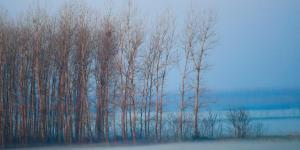
Fog is a meteorological phenomenon that significantly impacts various human activities, from marine navigation to international infrastructure transportation. There are different types of fog, each with specific characteristics and formation mechanisms. Advection fog is defined as a fog formation that...
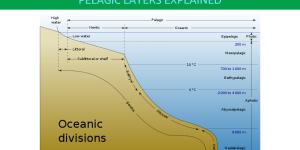
The pelagic zone is a part of the open ocean which is divided into different layers. It begins horizontally at the end of the neritic zone, but extends vertically from the surface to the depths of the ocean. The different layers of the pelagic zone have different characteristics, impacting the types...

Seed dispersal is the process by which seeds are moved away from the parent plant. Plants can't walk around and sow their seeds in new locations, so they've evolved clever ways to hitch a ride on wind, water, animals, or even just rely on gravity. This movement not only increases individual plant survival...

Sleet is a form of precipitation that combines characteristics of snow and rain, resulting in partially frozen water droplets falling from the sky. For this reason, it is also known as rain and snow mixed, a very matter-of-fact description for the same phenomenon. Sleet is formed when snowflakes pass through...

The blueprint of life, DNA, holds the secrets of inheritance and variation. But how does this blueprint get shuffled and combined to create new possibilities? Enter genetic recombination, a fascinating process where genetic material is exchanged between chromosomes, leading to a vibrant dance of genes....

As part of the larger cell nucleus, the nucleolus is a suborganelle which is responsible for the biosynthesis of ribosomes in the cell, among other functions. It is a nuclear body which is distinguished by its presence as a dark, spherical structure within the nucleus of cells. Its own structure that...

Binary fission is a method of asexual reproduction that involves the simultaneous duplication of DNA and division of the cytoplasm. In doing so, it generates two identical daughter cells. This mainly takes place in prokaryotic cells such as bacteria, but it can also take place in unicellular eukaryotes....

Ever admired a rose up close and then compared it to a tulip? Unlike most flowers, the colorful parts of a tulip aren't classic petals, but rather structures called tepals. While petals are the usual colorful attractors for pollinators, some flowers, like tulips or lilies, have these unique tepals....

Chromatophores are specialized cells that contain internal pigments that reflect light. The functions of chromatophores include camouflage, communication and protection against ultraviolet radiation. There are different types of chromatophores, including melanophores, erythrophores, xanthophores, iridophores...
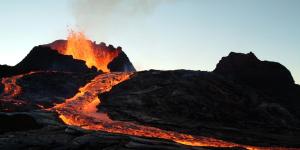
Volcanoes erupt, spewing forth molten rock and ash, and with them come several unfamiliar terms. Magma, lava, fissures and much more. These words might not be part of your daily vocabulary, but understanding them is crucial to really appreciate the of these natural wonders. Volcanoes have a profound...
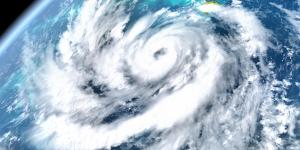
Hurricanes are extreme weather events which have been known to decimate land areas which incorporate multiple countries at the same time. Primarily affecting coastal communities, they have devastating consequences on the areas they affect. This includes the destruction of infrastructure, damage to natural ecosystems...

Unlike car exhaust fumes that dissipate quickly, ozone is a hidden danger lurking in our air. This gas isn't directly emitted, but rather forms when pollutants react under specific conditions, like sunshine. The result? Ozone, which can travel long distances and pose a significant health risk. According...
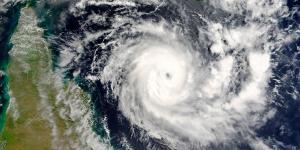
A wind shear is a strong change in wind direction or intensity that occurs over short distances. In nature, this phenomenon is usually generated by the development of storms, jet streams, trade winds and/or sea or mountain breezes. Physical obstacles from natural or even manmade sources can also result in...

The nucleoid is a characteristic feature of prokaryotic cells, houses the organism's genetic material and plays pivotal roles in genetic storage, DNA replication, transcription, and gene regulation. It is formed through the condensation and functional organization of a single chromosomal DNA molecule.
In...
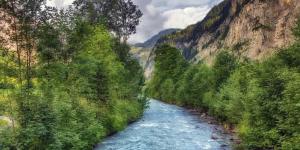
Lotic ecosystems are freshwater ecosystems which have dynamic currents of water, as opposed to those bodies of water which are relatively stagnant. Aquatic ecosystems are defined by various factors, such as size or temperature with the level of salinity being a major determinant. Movement is a categorization...
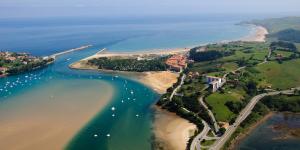
Have you ever stood at the edge of a river, gazing out towards the vast ocean, and wondered what happens where the freshwater meets the salty sea? The answer lies in a fascinating and crucial coastal ecosystem: the estuary. These dynamic zones, where rivers and oceans collide, are a blend of freshwater...

The climate of a certain area is its long-term weather patterns which are established over time, as opposed to weather which changes regularly. Desert climate is the long-term weather patterns of desert areas, geographical ranges which are defined by having little precipitation and subsequent harsh living...

We all admire the vibrant flowers and the delicate leaves of a plant, but have you ever stopped to consider the vital role played by the stem? Often overlooked, the stem is much more than just a simple support structure. This seemingly ordinary part holds the key to a plant's survival and growth.
This...
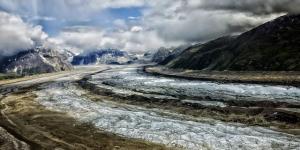
Tundras are geographical areas which are characterized by short growing seasons, harsh conditions and other limitations for the development of life. While these geographical areas constitute a biome, each tundra biome can have various ecosystems within it. They are all subject to certain types of landscape,...

Within the microscopic world of cells, a specialized compartment called the vacuole plays a vital role in the survival and reproduction of the cell. This membrane-bound sac acts as a storage unit, waste disposal center, and even a regulator of water balance within the cell.
In this article by thedailYECO,...

Air quality is a critical aspect of environmental health, impacting human well-being and ecosystems alike. Understanding the diverse forms of air pollution is essential for addressing its detrimental effects and safeguarding our collective future. Did you know that air pollution shortens lives by an average...

Our planet is teeming with life, from towering redwoods to microscopic bacteria. This incredible variety, known as biodiversity, is the foundation for a healthy and functioning Earth. It's not just about counting different species, but encompasses the vast genetic variation within species and the intricate...

Ever noticed clouds that seem to display faint rainbow colors? Those are iridescent clouds, and they offer a glimpse into a cool interaction between light and tiny water droplets or ice crystals in the sky. But unlike a rainbow, which requires rain and sunlight, iridescent clouds reveal their beauty...

Ferns are the living fossils of our planet, some of the first inhabitants of the Earth's green world. Often grouped with other non-flowering vascular plants like horsetails and club mosses, these ancient giants once ruled the plant kingdom millions of years ago. Their reign even contributed to the vast...

There are various different types of watercourse, meaning the way in which water flows through a channel of land. This manner in which the water flows is a stream, but this definition can be complicated by the fact there are many different types of channels through which water can flow. For example, we may...
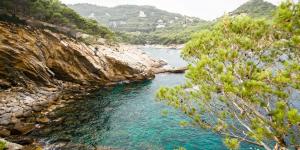
The coastline is a transition area between land and sea that encompasses a diversity of coastal ecosystems. These ecosystems are of great importance for both natural and human life. Coastlines vary greatly in term of geographical formation, ranging from sandy beaches to coral reefs. These dynamic environments...

The study of bioclimates is essential to understanding the distribution of climatic conditions on Earth. A bioclimate is the set of climatic conditions that determine the type of flora and fauna which can survive in a given geographical area. It is this geographical area which we can refer to as a bioclimatic...

Lentic ecosystems are aquatic ecosystems associated with lakes and other slow-moving bodies of water. As they are a type of ecosystem, they are used to refer to how plant and animal life interacts with their environment as a community. In this case, it is a lentic environment. The types of life which...

Droughts are a growing concern worldwide, prompting scientists to explore ways to influence weather patterns. One such technique is cloud seeding, a process that aims to increase precipitation by manipulating the tiny particles within clouds. It might sound like something out of a science fiction film, but...

Cilia and flagella are specialized structures located on the surface of single-celled eukaryotic cells, as well as organisms such as bacteria and archaea. While they have differences in terms of structure and function, they are often confused with each other due to their similarities. In terms of structure,...

Plants may seem simple at first glance, but each part plays a crucial role in their survival and success. We can easily identify a tree's trunk or a flower's bloom, but delving deeper reveals a fascinating world of specialized structures. From the anchoring power of roots to the intricate dance of flowers...

Also known as globe lightning or orb lightning, ball lighting is a very poorly understood phenomenon. Since it is believed to be rare and unpredictable, study of this type of lightning can be difficult. As with all lightning, they are a form of electrical discharge which occur during thunderstorms. Conventional...
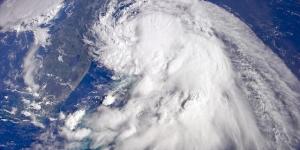
Air masses move differently in our Earth's atmosphere, with varying effects on the spaces beneath them. Specifically, they can influence weather patterns which can be disruptive or beneficial to both terrestrial and aquatic ecosystems. Cyclones are one of the most significant types of air mass which are...

Unlike animal cells, plant cells wear a sturdy exoskeleton - the cell wall! This essential structure is more than just a protective shell. It provides crucial support, safeguards the cell's interior, and even plays a role in regulating growth and nutrient exchange. Made primarily of cellulose, a complex...

Our planet thrives with life, a vibrant tapestry woven across diverse environments. From the sun-drenched stratosphere to the crushing depths of the ocean, a multitude of habitats provide the stage for this extraordinary biodiversity. While habitats seem infinitely varied, we can broadly classify them...
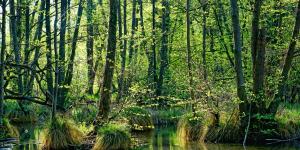
Swamps often get a bad rap – murky, mysterious, and maybe even a little monstrous. But look beyond the surface, and you'll discover a fascinating and vital ecosystem teeming with life. These unique wetlands are characterized by their waterlogged soils and the presence of standing water, creating a dynamic...
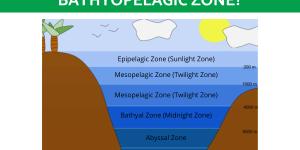
Our planet's oceans hold a hidden world, a vast realm shrouded in perpetual darkness. This region, known as the bathypelagic zone, plunges from 1,000 to 4,000 meters below the surface. Sunlight never reaches these depths, yet the bathypelagic zone teems with life. Extraordinary creatures, adapted to the...
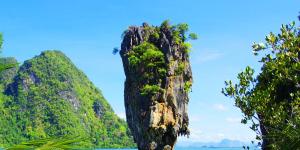
Stacks are prominent rock formations present in various geographical environments, providing prominent elements in the configuration of the natural landscape. While there are geological stacks present inland, we may me more familiar with sea stacks than land stacks since they are more revered for their...

Catatumbo's Lightning is a fantastic display of nature's raw power. Often referred to as the "Everlasting Storm," this region in Venezuela experiences up to 40 lightning strikes every minute, which earn it a place in the Guinness Book of Records. However, there is a scientific explanation for this phenomenon....

Have you ever gazed out at a dramatic coastline and wondered about those landforms jutting into the sea or the deep indentations carving inland? These captivating features, capes and gulfs, represent opposite yet fascinating interactions between land and water.
This article from thedailyECO dives into the...
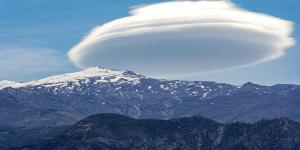
Have you ever gazed skyward and spotted a cloud that resembled a flying saucer or a giant contact lens? These captivating formations, known as lenticular clouds (or Altocumulus lenticularis for the science buffs), are a unique phenomenon often associated with mountainous regions. Their formation is...
